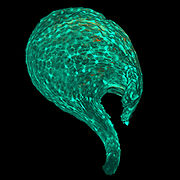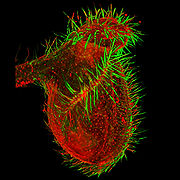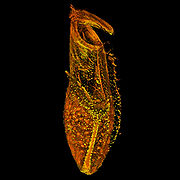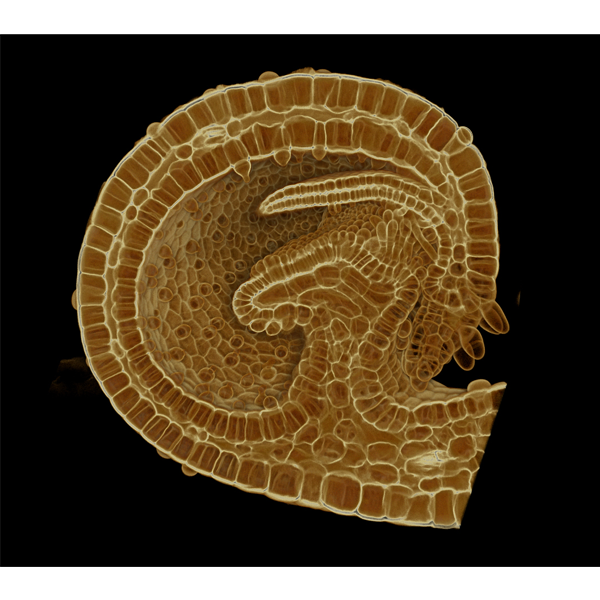Leaves come in many shapes and sizes, from simple flat blades to elaborate vessel or pitcher shapes found on some carnivorous plants. How do plants create this diversity of forms? You might think they do it much as a potter creates different shapes with clay. But unlike pottery, there is no external hand guiding the process of plant growth. Leaves have to construct themselves. Each leaf starts from a small group of cells in a bud, a fraction of a millimetre across. The bud turns itself into a leaf through internal rules of growth. We would like to define these rules and understand how they lead to the growth of diverse leaf shapes, from the simplest to the most complex. The vessel shaped leaves of carnivorous plants are particularly intriguing as this leaf form has evolved four times independently in carnivorous species, as an adaptation to trapping animal prey.
The four independent origins of vessel-shaped leaves are: Bladderwort suction traps plant (Utricularia), Albany pitcher plant (Cephalotus), tropical pitcher plant (Nepenthes) and American pitcher plants (Sarracenia). The movie shows a journey through an example from each of these groups, imaged using Optical Projection Tomography.
Find out more
References
- Science Publication 2020: Evolution of carnivorous traps from planar leaves through simple shifts in gene expression
- PLOS Biology Publication 2019: Shaping of a three-dimensional carnivorous trap through modulation of a planar growth mechanism
- Let’s grow to joy division planes – Plants and Pipettes
- Carnivorous plants help uncover universal rules of plant development – TheScienceBreaker
- Scientific American blog by Carin Bondar
- Antique Botanical Paintings of Carnivorous Plants from the John Innes Historical Collection
- The Carnivorous plant Society




